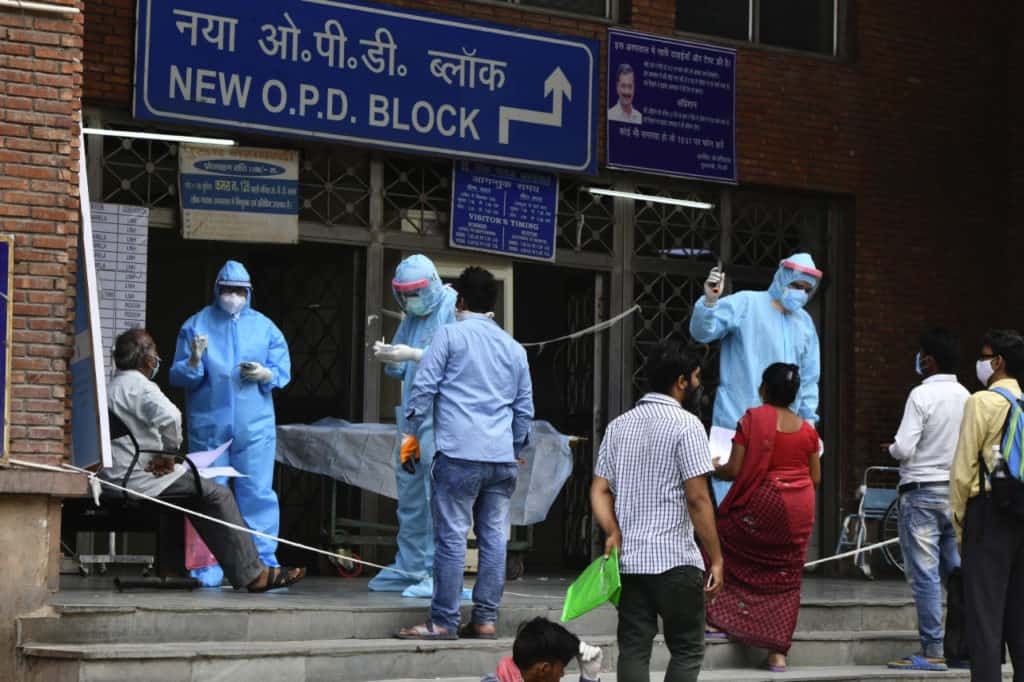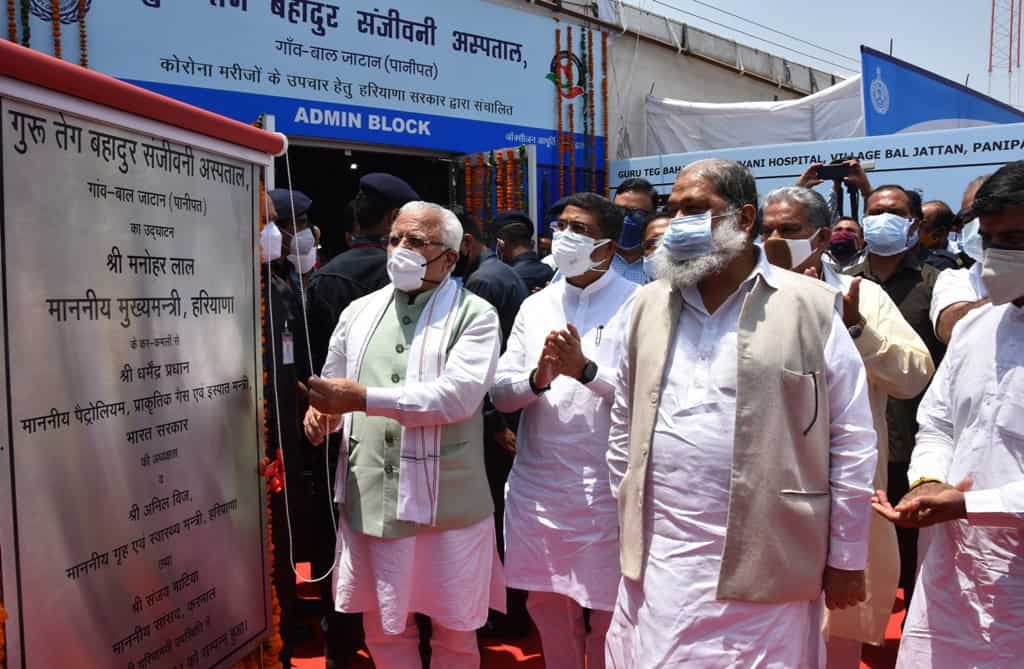In normal times, the road to Sonipat, the Haryana town 45 kms from Delhi, gets so congested that it would make the distance seem double of what it is. Known initially only for the National Sports School located there, in the late 80s Sonipat also became known for exporting exotic horticultural produce to Delhi and Europe. A few years ago, the Ashoka University, with its focus on liberal arts and the ambition of giving a run to Ivy League schools abroad, made Sonipat its home.
It was by no stretch of imagination a centre for healthcare, like Gurugram with its Medanta Medicity. Yet, with the COVID second wave running rampant in Delhi, Padma Shri P K Sen, 84, former director of Project Tiger, and a much loved man in wildlife and environmentalist circles, recently headed from his South Delhi home to Sonipat for admission to a small hospital there. A COVID bed had apparently been “managed” for him in the town. He did not reach the bed, despite the best efforts of the ambulance driver! The horrible virus took him on May 1st.
That was at a time when Delhi was facing an acute shortage of everything to do with treating COVID — beds with and without ventilators, oxygen, ICU facility, doctors, nurses and attendants. Everyone from the Supreme Court to the PM to the Chief Minister of Delhi admitted as much. Residents of the capital and “almost-Delhi” areas like Gurugram, Faridabad, Ghaziabad and NOIDA, could not find a bed in their cities for their dear ones, many of whom were literally gasping for breath.
Ambulances were fleecing the desperate — one lady paid Rs 3000 for a five-minute ride for her husband. Delhi Chief Minister Arvind Kejriwal would have loved to dust up his old idea of reserving COVID beds in Delhi for residents of the city, but knew he could not do it. At the height of the first wave of COVID last year, Kejriwal was peeved that many from the neighbouring areas were occupying precious COVID beds in the capital.
This time however, the trend was reversed. Delhi and NCR residents, across income and class groups, were rushing out of NCR the minute they learnt of a possibility of vacant COVID beds anywhere in Delhi’s neighbourhood. And so it was that PR veteran Sunita Budhiraja headed for Mathura, known as the birth place of Lord Krishna and for its “pedas”. Scores of young men and women she had mentored were heading or working in the corporate communications department of big hospitals in NOIDA, where Sunita lived. But those contacts could not get her a bed. Sunita gave up her fight against COVID in Mathura.
Read more: COVID vaccination: My travails over the second dose
Travelling 245 km for a COVID bed
Delhi, in good times, used to get a good share of medical tourism. With big, well-known hospitals, it was also where residents from Ghaziabad, Gurgaon etc preferred to come for treatment of major ailments. Even during the first wave in June-July 2020, many patients from the periphery went to Lok Nayak Jai Prakash (LNJP) Hospital or Sir Ganga Ram Hospital, the shortage of COVID beds notwithstanding. Or they checked into one of the many Delhi hotels that had been converted into COVID care centres.

But all the expansion of facilities — including those that had been shut down and revived — were not enough to handle the huge surge of patients hit by the second wave. Is it surprising then that patients rushed to small towns like Sonipat and Mathura, with no known medical facilities? Even Chandigarh, 250 kms away, saw its share of patients from Delhi, as it has good medical infrastructure.
It was not just lack of hospital beds that drove patients out of Delhi. The capital’s residents were desperately whatsapping their need for oxygen and drugs like Remdesevir. These were unavailable even at the biggest of hospitals in their VIP neighbourhoods.
A senior journalist, G Shivaram had chest congestion and breathlessness and tested positive on April 30th. With no beds available in Delhi-NCR, his sister booked a bed for him in Shantived Hospital, Agra. He got an ambulance, and began his 245-kilometre journey at the crack of dawn the next day, the journey made somewhat less traumatic because of the Taj Expressway.
“It was a fairly big hospital, 80 beds, and excellent doctors who attended to me very well,” says Shivaram, who was on oxygen at for 10 days before discharge. He is not surprised that patients are going to small towns with no known medical facilities to boast of.
Interestingly, patients were making this journey from the capital region to smaller towns when headlines screamed that the deadly second wave had spread from the big cities to smaller towns and even villages. While there were lots of news reports about beds and health care facilities getting almost choked in the state capitals and even district headquarters in north India, Shivaram says he saw “four of five vacant beds” in the Agra hospital.
Also read: COVID chaos in Delhi: Who stole all the hospital beds?
Poor state of district hospitals
That hospital, however, was probably an exception given that the state of healthcare facilities is far from adequate in these small towns. Starting with the number of hospitals to doctors for any given population, the healthcare system in these places leaves much to be desired. Especially when it comes to availability of ICU, ventilators and most importantly, oxygen.
Almost in an admission of the poor medical facilities in its towns, the Haryana government on May 16th, inaugurated a make-shift 500 bed hospital near the refinery in Panipat, 88 kms from Delhi, and named it Guru Tegh Bahadur Sanjivani COVID Hospital. A similar COVID hospital has also come up next to a steel plant in Hissar, 160 kms from the national capital.

The Allahabad High Court on May 17th went into the report on health infrastructure in the districts submitted by the UP government and warned that these were inadequate. “Health infrastructure is absolutely insufficient in city areas to meet the requirement of the city population and in rural areas, the Community Health Centres are lacking in respect of life-saving gadgets,” the court observed.
For instance, while we do not know if anyone from the capital and surrounding areas went for COVID treatment to Bijnor, a UP town about 160 kilometres away, Justices Sidharth Varma and Ajit Kumar, who comprised the Allahabad HC bench, referred to the district as a “test case.” They noted that there were “no Level 3 hospital in Bijnor urban areas, while its three government hospitals had only 150 beds, five BiPAP machines and two cannulas for High Flow Nasal Oxygen”.
Some district level hospitals are better equipped, but many are worse. If residents of these districts, as well as those from the capital, were to make a beeline for the scarce private healthcare facilities in these small towns, it may be just a matter of time before it becomes difficult to get a bed even there, especially an ICU one with oxygen and ventilators.